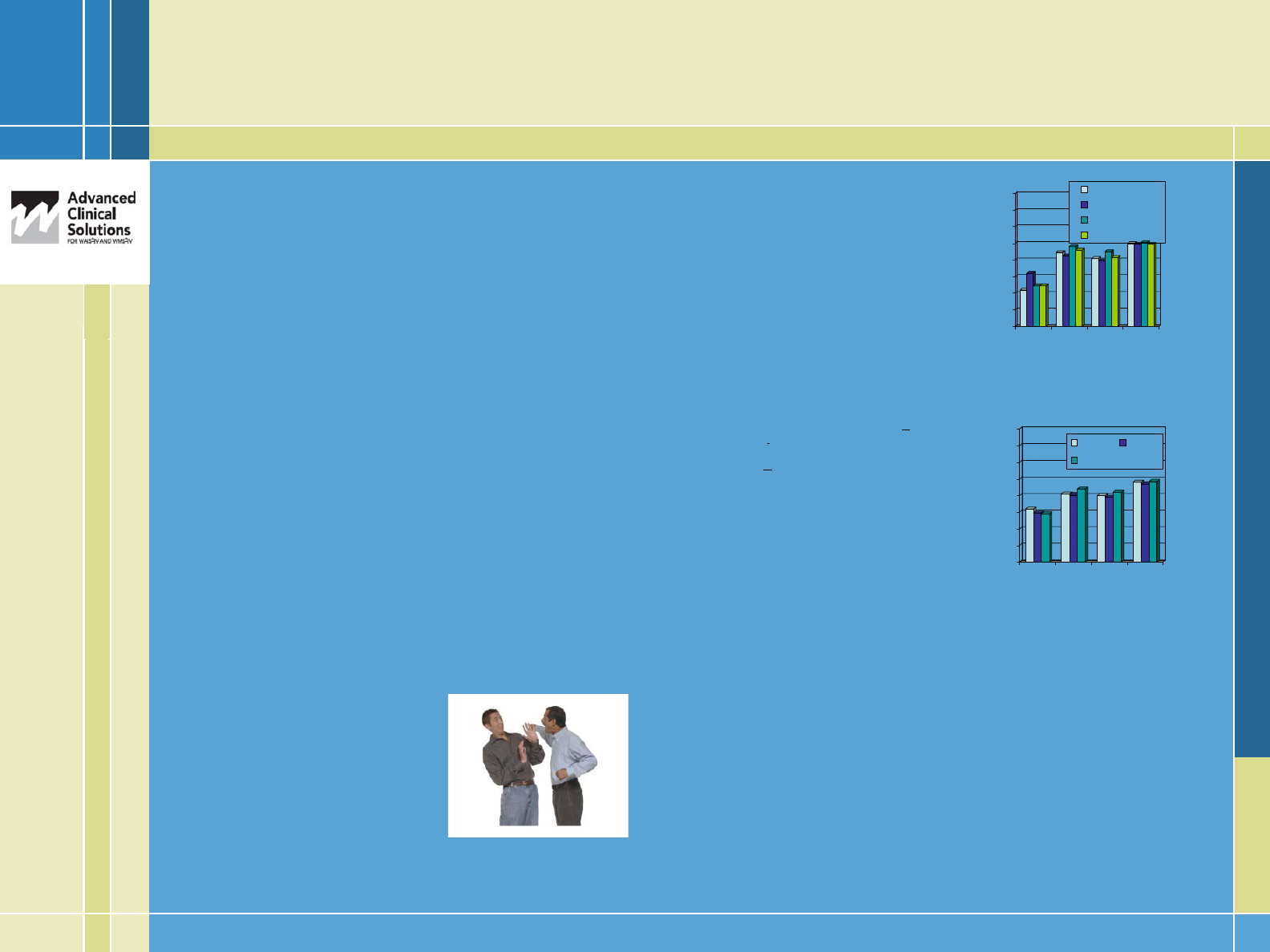
Holdnack, J.A. PhD
1
; Drozdick, L.W. PhD
1
1
Pearson
Introduction
The Advanced Clinical Solutions for the WAIS-
IV/WMS-IV (Wechlser, 2009) is a battery of tests
and procedures designed to supplement the
standard WAIS/WMS-IV. One component of the
ACS is the Social Perception subtest. This
subtest is designed to measure processes
thought to be involved in social interactions and
communication.
Neurodevelopmental disorders are often
associated with impairments in social
behavior,particularly in Pervasive Developmental
Disorders (APA, 2000). Individuals diagnosed with
autism spectrum disorders show deficits in the
development of multiple aspects of face
processing including face recognition and affect
recognition (Golarai, Grill-Spector, & Reiss,2006).
Adults diagnosed with high functioning Autistic or
Asperger’s Disorders do not show normal brain
activation in the amygdala and orbitofrontal
regions in response to fearful faces but do show
activation in the anterior cingulate and superior
temporal lobes (Ashwin, Baron-Cohen,
Wheelwright, O’Riordan, & Bullmore, 2007).
Asperger’s Disorder in adults isassociated with
atypical event-related potentials when identifying
facial expressions of emotion (O’Connor, Hamm,
& Kirk, 2005) and reduced activation of the
extrastriate cortex and fusiform gyrus (Deeley et
al., 2007). Adults diagnosed with Autistic Disorder
show deficits in identifying fearful, disgusted,
happy, (Humphreys, Minshew, Leonard, &
Behrmann, 2007) and sad (Boraston, Blakemore,
Chilvers, & Skuse, 2007) facial expressions. The
deficits in affect recognition seen with Autistic
Disorder are not attributable to impairments in
lower level visual-perceptual processing
(Humphreys et al., 2007). In addition to deficits in
facial affect recognition, adults with Autistic
Disorder also have deficits in identifying emotion
from prosody (Hollander et al., 2007).
Participants
Controls
The sample was comprised of 800 examinees ages
16-90 years of age. Exclusionary criteria included
any history of neurological, psychiatric,
developmental or medical condition affecting
cognitive functioning. Subjects were screened for
general cognitive impairment and poor effort. The
demographic characteristics of the sample were
matched to 2005 census data for ethnicity and
education level. Examinees above the age of 70
were excluded based on research with previous
editions of this subtest that showed declining visual
and spatial discrimination skills interfered with older
examinees performance on this subtest.
Clinical Groups
The clinical samples were collected as part of the
ACS standardization. Sixteen adults (21.7 +
6.4
years of age)
diagnosed with Autism and having an
IQ > 70 participated in this study. Twenty-seven
adults (22.1 +
7.7 years of age) diagnosed with
Asperger’s Syndrome and having an IQ > 70 were
sampled for this study. Age, education, and
ethnicity matched controls were randomly selected
from the normative sample.
Results
Reliability and Correlation with
Intellectual Functioning
In the normative sample, obtained internal
consistency measures were: Social Perception
Total (.70-.84), Affect Naming (.53-.85), Prosody
(.64-.79), and Pairs (.78-.85). The Social
Perception Total score correlated significantly
with WAIS-IV GAI (.40), VCI (.38), PRI (.32), WMI
(.29), PSI (.35) and FSIQ (.42).
Clinical Data
The Autistic group performed in the borderline to
low average range: total social perception
(SS=4.4), affect naming (SS=6.4), prosody
(SS=4.9), and pairs (SS=4.9). Compared to
matched controls, the Autistic sample performed
significantly lower on all measures (p < .01)
except affect naming, with effect sizes ranging
from 1.71 (total score) to .57 (affect naming).
The Asperger’s group performed in the low
average to average range: total social
perception (SS=8.2), affect naming (SS=7.9),
prosody (SS=9.0), and pairs (SS=8.3). The total
score and affect naming were significantly
lower than matched controls.
Conclusion
Adolescents and adults with Autism show general
deficits in social perception while those with
Asperger’s syndrome had specific difficulties with
affect naming. These results validate the use of
the ACS: Social Perception subtest in these
clinical samples.
Social Perception Deficits in Adolescent and Adult
Autism Spectrum Disorders
Methods
Procedures
The Social Perception subtest is composed of 3
item sets that measure different components of
social perception. In the first item set, the
examinee sees 6 Faces expression one of 7
possible emotions: happy, sad, angry, disgust,
fear, surprise, or neutral. The examinee labels the
emotion expressed by each face. In the second
item set, the examinee listens to an audio tape
while viewing 6 faces on a stimulus page. The
audio presents a verbal statement with prosody
which is either happy, sad, fearful, angry,
surprised, disgusted, neutral, or sarcastic. The
examinee must determine the emotion of what
was being said on the audio and match it to the
correct facial expression. In the third item set, the
examinee hears an expression on the audio tape
while viewing 4 pictures with people interacting.
The examinee must determine the emotion being
expressed from the prosody on the audio and
match it to the pair of people interacting that best
represent what was heard on the audio. The
examinee must state the emotion being expressed
and if the tone of voice changed the meaning of
what was said. If the prosody did change the
meaning of what was said, the examinee indicates
what the speaker really intended to say. The
Social Perception subtest yields 4 scores: total,
affect naming, prosody, and pairs. Contrast
scores comparing total social perception with
WAIS-IV GAI, VCI, and PRI are available to rule out
deficits due to general or specific intellectual
deficits resulting in low scores on social
perception.
Example of a Picture from a Pairs Item
Table 1: Social Perception by Clinical Group
0
2
4
6
8
10
12
14
16
A
u
t
is
m
C
o
n
t
r
o
ls
A
sp
e
r
ger
'
s
C
o
n
t
r
o
ls
Total
Affect Naming
Prosody
Pairs
Table 2: Social Perception VS IQ by Clinical Group
0
2
4
6
8
10
12
14
16
A
u
t
is
m
C
o
n
t
ro
ls
A
sp
e
r
ger
'
s
C
o
n
t
ro
ls
VS GAI VS VCI
VS PRI
